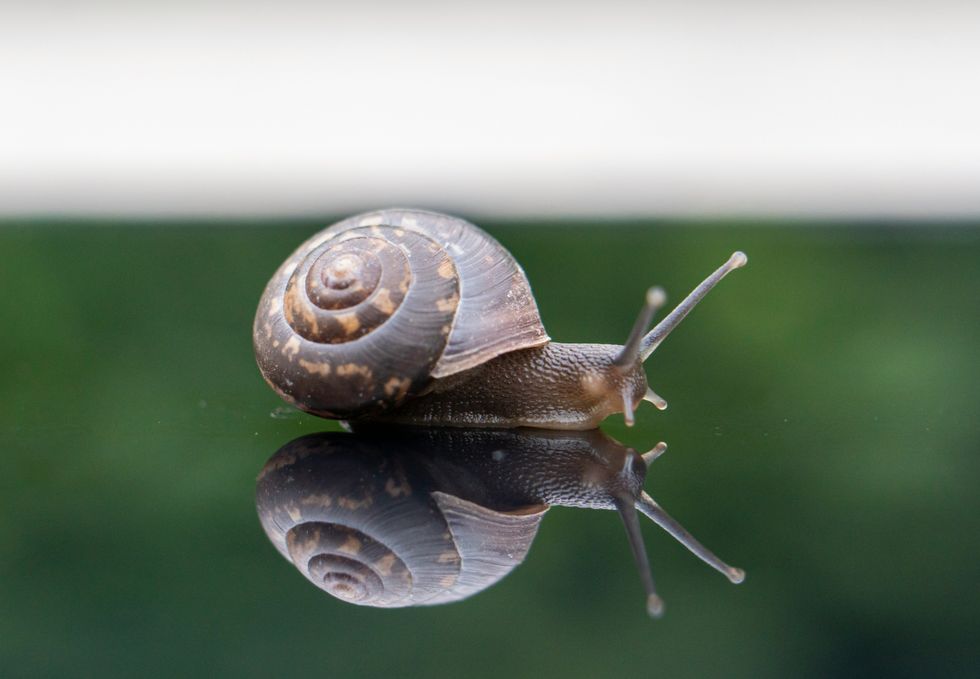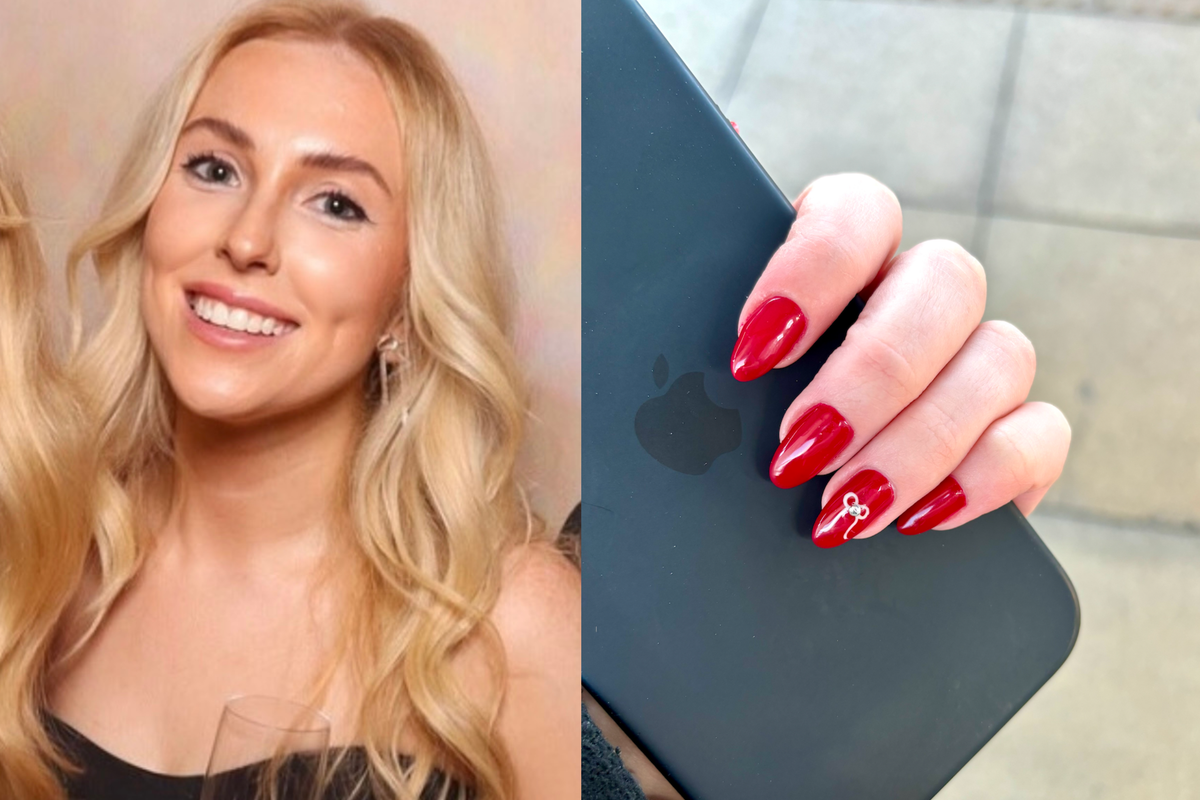Is snail slime the secret to supple skin?
A key ingredient behind the smooth, radiant and glassy appearance of skin in Korean beauty is snail mucin.
This traditional K-beauty skincare ingredient, also known as snail secretion filtrate, is now trending. It comes from the slime snails naturally produce (the slimy trail left behind by snails on the move).
In the skincare world, snail mucin has crawled its way into serums, essences, and moisturisers which claim to reduce the appearance of fine lines, brighten dullness and improve hydration. Some of the products people are shelling out on are also marketed to improve skin healing, reduce acne scarring and establish a more radiant, rejuvenated complexion.
Skincare expert Dr Ross Perry, medical director of Cosmedics skin clinics and a registered doctor qualified at Guy's and St Thomas' Hospital medical school has experience in skin lesions and cosmetic skin treatments. He has seen a “surge” in mucin popularity recently.

The slime acts as a natural lubricant for snails and protects their delicate bodies from damage and pathogens. “Snail mucin, is a natural substance produced by snails to protect and regenerate their skin,” Perry tells Indy100, adding that the ingredient is, "especially praised for its ability to combat signs of ageing by plumping the skin and enhancing elasticity".
He adds: "It also aids in healing scars and wounds, thanks to its content of hyaluronic acid, which not only boosts hydration but also offers powerful antioxidant protection against environmental stressors.
“For those familiar with the concept of ‘glass skin’, snail mucin is often a key ingredient in achieving that radiant look.”
Despite becoming a major Korean beauty product, people found out about its benefits centuries ago. Ancient Greeks used snail slime on their skin to combat topical inflammation. Reports from snail farmers in Chile in the 1980s claimed their hands felt noticeably softer and the cuts on their hands healed faster after handling snails intended to be eaten in France.
More recently, there have been studies and comprehensive reviews on the reported benefits of snail mucin and its ingredients. In 2020, a study published in the National Library of Medicine about snail mucin’s ability to improve signs of skin ageing along with snail egg extract found that it gave those who used it “significant improvements in skin roughness, firmness and elasticity”.
Meanwhile, research published in 2024 highlights the potential of snail mucin as an anti-inflammatory, plus its ability to reduce the appearance of fine lines and wrinkles. The study, published in the National Institutes of Health database, reviewed the therapeutic uses of snail mucin, even as a wound healing agent.
How is snail mucin collected?
Many companies now use ethical techniques to acquire slime, including allowing snails to move over mesh to collect the mucin they naturally produce. The precious slime is then filtered and purified for cosmetic use.
One product that has a lot of hype among influences is the COSRX Advanced Snail 96 Mucin Power Essence Gel, priced at £24.99. Julia Marinkovich, a UK representative of the brand, said snail mucin has “huge benefits”.
Speaking to Indy100, Marinkovich said: “You can expect skin to be softer, more moisturised and glowing with consistent use of snail mucin.
“Snail mucin is naturally made up of properties like glycoproteins, hyaluronic acid and glycolic acid, all of which have long-documented benefits for the skin.
"Thanks to the hyaluronic acid in the mucin, it has moisturising properties that support the skin barrier and help lock in moisture. The glycolic acid helps to stimulate collagen production that not only helps diminish fine lines and wrinkles, but it also helps to give your complexion a radiant, youthful glow. It also contains zinc which is anti-inflammatory and allantoin which soothes irritation.”
Marinkovich suggests using a snail mucin essence before your moisturiser as part of a multi-step skincare routine “for a glowing and hydrating boost” once or twice per day after cleansing.

But is it ethical? A COSRX spokesperson said no snails are harmed in the process of slime collection, emphasising that the brand is committed to “ethical and sustainable practices”. Nocturnal snails “roam freely” on safe mesh in a “dark, quiet, and comfortable room” and after an hour of work, the snails are transferred back to their “homes”.
There are also vegan alternatives, as PETA recently issued a lengthy statement declaring "snails are not skincare tools". For consumers may still be concerned during their quest for smooth skin, Byoma’s viral Phyto-Mucin Glow Serum (£14.99) is made with phyto-mucin (plant-derived mucin), which plumps the skin, reduces wrinkles and strengthens the skin barrier. It also contains plant-based peptides and hyaluronic acid.
Revolution Skin launched its Must Be Mucin Soothing Serum (£9.99) this year, another vegan alternative. It’s made with Tremella mushroom and wild yam root to “give a mucin-like texture” as well as Camellia and Centella leaf, says Hollie Campen, product manager at Revolution Beauty.
Whether you choose snail slime or vegan alternatives, K-beauty's dominance in the beauty world has been anything but snail-paced.
You should also read:
- What is the recession brunette trend and how is it related to Trump?
- Why foundations may look ashy or grey on darker skin according to scientists
- Everyone’s sharing their unbelievable before vs afters of using Korean skincare - here’s what to buy
How to join the indy100's free WhatsApp channel
Sign up for our free Indy100 weekly newsletter
Have your say in our news democracy. Click the upvote icon at the top of the page to help raise this article through the indy100 rankings.














